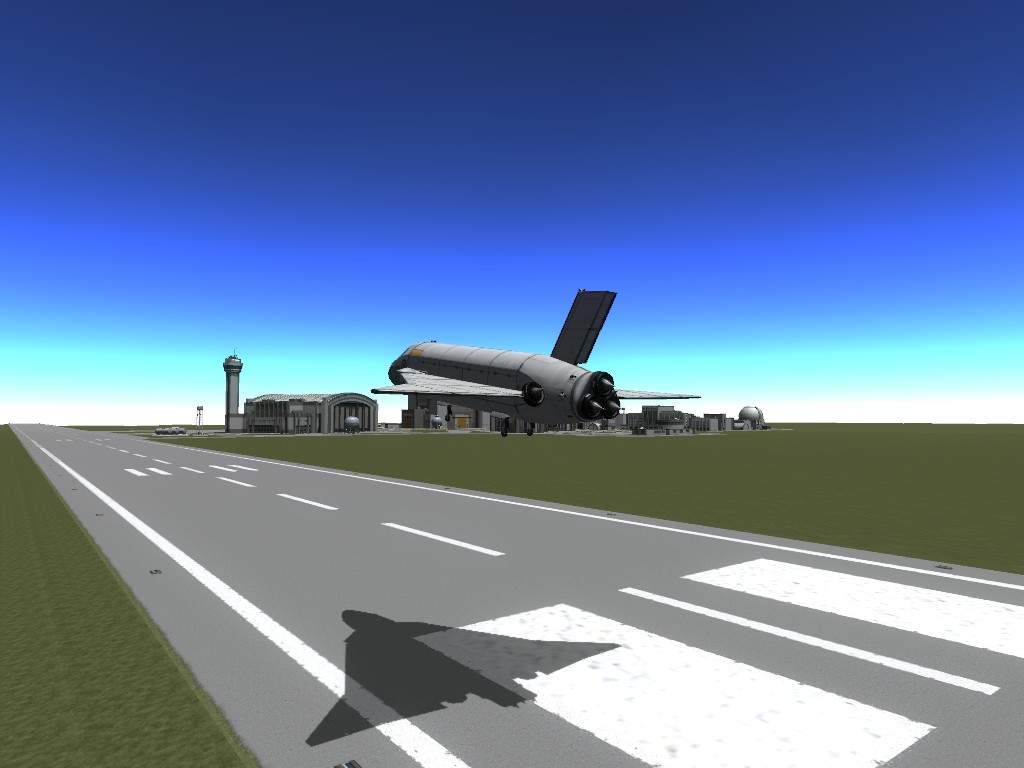Overview
So, you’ve made a fancy spaceplane and got it into orbit? Nice job. But maybe you’re not sure how to get back to the runway from orbit. My guide will help to point you in the right direction so you can hit the runway every time.
Adjusting your orbit.
Alright, your spaceplane had made it into orbit. Whether it was a space shuttle or a SSTO, spaceplanes are largely made for one purpose: Landing like an aircraft so they can be safely recovered. Since full part recovery happens when you reach the KSC, it’s vital to de-orbit your vessel so you land at the KSC. I will use my latest shuttle mission as an example on how to proceed.

De-orbiting burn.
Now that your in a circular orbit of 100k, we can prepare our descent. Locating the KSC on the map is easily done by planting a flag at its location. The real space shuttle did its de-orbiting burn on the opposite side of the planet from the landing zone, so we are going to replicate that maneuver.
First we set our node:

De-orbiting burn:
Nothing really complicated, just burn towards the maneuver icon until results match. Using RCS can help fine tune so the PE is closest to our goal. When done your orbit should look something like this:
Bring it on home.
Nothing too fancy here, just try to keep the plane oriented on a neat level trajectory.

Hopefully before going to space, you tested the ability for this craft to glide. It is likely you will not be perfectly centered with the runway, but as you descend, the air will get thicker, making your control surfaces more effective, allowing you to perform course corrections and get her lined up.
When touching down on the runway it is important to keep an eye on your vertical velocity. This is the gauge next to your altimeter. Pitching up will reduce this speed, however it can also cause you to start climbing. Keep it below 5 m/s for the ideal touchdown.
Depending on the structural design of your craft, hitting the runway too hard can be disastrous.
Variables and contingencies.
Unfortunately, while the 100k AP, 40k PE leads to the most favorable results, the end isn’t always consistant. Fuel supply, cargo, and general mass of the craft can lead to different reactions when landing. In my recent case, the orbiter ended up coming short of the KSC. If you have a reasonable fuel supply, this can easily be compensated.
Now let’s look at the same scenario should you overshoot the KSC. Same descent profile as before, but this time I added 1500m to the PE to compensate for the weight difference. (crashing on the runway may or may not have had something to do with the do-over.)
This time I overshot the KSC and was presented with two options: Continue my path and try to reach the island runway (Which I was high enough to probably make it) Or attempt to turn around. Your altitude may be too high, but you may be low enough to put her into an effective nose dive. While I couldn’t line up with the runway, I was able to get low enough to swing around the KSC.


If your orbital inclination isn’t a 90 degree equatorial orbit, this procedure can still work so long as the PE still intersects the KSCs location.
Hopefully this guide will be helpful in bringing you safely home every time.









